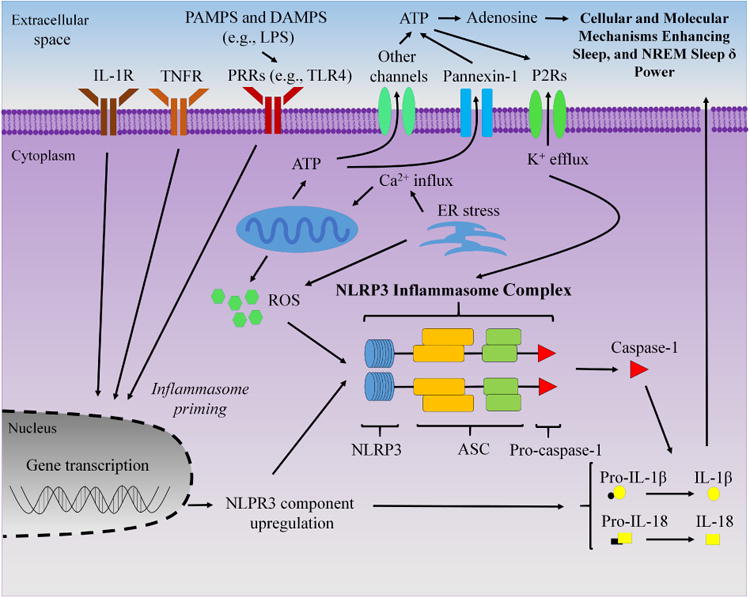Fig 8.

Schematic of proposed role of the non-conical NLRP3 inflammasome in neurons and glia in sleep regulation. Extracellular adenosine triphosphate (ATP) and pathogen associated molecular patterns (PAMPS) activate purine type 2 receptors (P2Rs) and pattern recognition receptors (PRRs) [e.g., Toll-like receptor 4 (TLR4) for lipopolysaccharide (LPS)], respectively, to activate the NLRP3 inflammasome protein complex. Additionally, mitochondria and endoplasmic reticulum (ER) stress likely play a role to activate the NLRP3 inflammasome, in part, through reactive oxygen species (ROS). Upon priming by LPS, interleukin-1 receptor (IL-1R) or the tumor necrosis factor receptor (TNFR), the NLRP3 inflammasome complex forms with ASC [apoptosis-associated speck-like protein containing a C-terminal caspase-recruitment domain (CARD)] to activate caspase-1, which cleaves the pro-forms of IL-1β and IL-18 into their mature active secreted forms to enhance sleep and non-rapid eye movement (NREM) sleep δ power. Arrows indicate activation or enhancement.
